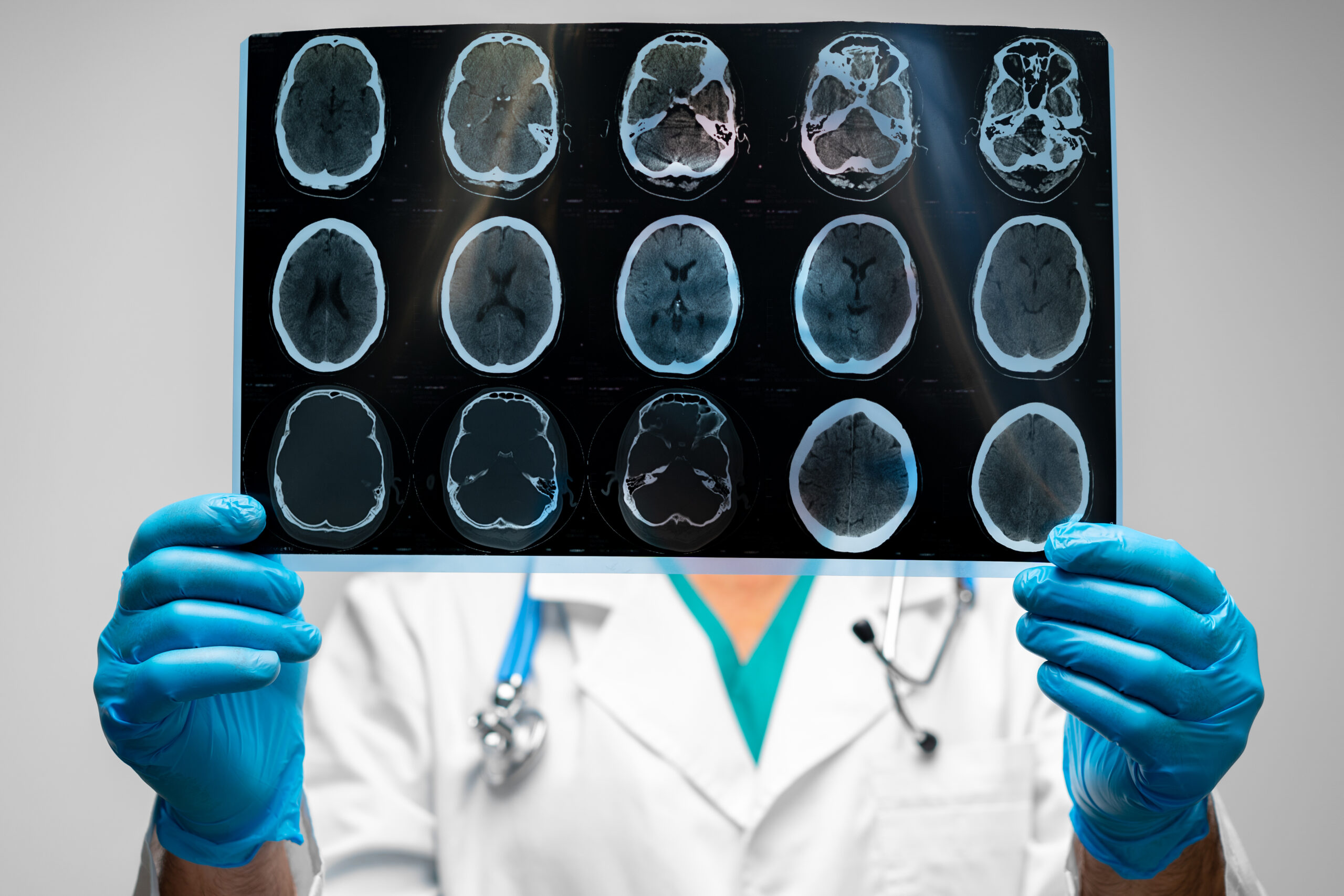Ask a Neurosurgeon: What to Know About Brain Aneurysms


A brain aneurysm can feel like a terrifying diagnosis, often compared to the grim specter of a stroke. This fear is not unfounded, given the severe damage both conditions can inflict. But, there are distinct differences between the two.Understanding brain aneurysm symptoms, their causes, and how to prevent them is crucial.
When it comes to understanding the brain aneurysm versus stroke distinction, what brain aneurysm symptoms to look out for, or the treatment process, no one is better equipped than a neurosurgeon.
A brain aneurysm, also known as a cerebral aneurysm, is a medical condition that occurs when a blood vessel in the brain starts to weaken and bulge, often looking akin to a small berry hanging on a tree stem. These formations are typically small, ranging from less than a quarter of an inch to an inch in size, but larger aneurysms, known as “giant aneurysms,” can exceed an inch.
The majority of brain aneurysms go unnoticed throughout a person’s life as they often don’t cause any symptoms. These are known as “unruptured brain aneurysms.” However, when a brain aneurysm ruptures or leaks, it causes bleeding into the surrounding brain tissue, a condition known as a subarachnoid hemorrhage. This can lead to a series of severe health consequences, such as an ischemic stroke due to a reduced blood flow, a hemorrhagic stroke caused by bleeding, brain damage resulting from neuronal cell death, or in the worst cases, death.
It’s important to understand that not every individual with a brain aneurysm will experience a rupture. Most will not. Factors such as the aneurysm’s size, location, and growth rate—along with the person’s overall health, family medical history, and lifestyle—play a role in determining the risk of rupture.
The exact cause of a brain aneurysm is still a matter of ongoing research, but it is widely agreed that they are the result of a weakness in the blood vessel’s wall. This weakness can be congenital, meaning a person is born with it, or it can develop over time due to wear and tear on the arterial walls.
There are certain risk factors that significantly contribute to the development and rupture of brain aneurysms. These include:
Understanding these risk factors can help in early detection and prevention strategies, thereby decreasing the chance of serious complications and improving patient outcomes.
When a brain aneurysm ruptures, it can lead to a hemorrhagic stroke as it causes bleeding in the brain. Therefore, the symptoms can overlap. However, the key difference is in their onset. When stroke hits, symptoms often occur progressively over minutes to hours, or even longer. On the contrary, the signs of a ruptured brain aneurysm are usually immediate and severe. Individuals may experience a sudden, piercing headache, nausea, and vomiting.
While we can’t control all the risk factors for brain aneurysms, individuals can make lifestyle changes to lower the risk. The primary preventative measure is controlling high blood pressure through a balanced diet, regular exercise, maintaining a healthy weight, and avoiding smoking and illicit drug use. Regular check-ups are also crucial in early detection and management. If there is a family history of brain aneurysms, a screening MRI can be done to rule out a brain aneurysm in other family members.
Once a brain aneurysm is diagnosed, your neurosurgeon will evaluate several factors, such as your age, the size of the aneurysm, and your overall health to decide on the best treatment approach. There are generally two surgical treatment options: surgical clipping or endovascular coiling.
While these procedures come with risks—including possible damage to other blood vessels, stroke, or brain damage—they are proven to significantly improve the prognosis if an aneurysm ruptures.
Brain aneurysm treatment has made significant strides in recent years, thanks to advancements in medical technology and understanding of the brain’s intricacies. Continued research is leading towards the development of new, less invasive treatments that promise fewer complications and faster recovery times.
The brain is one of the body’s most complex organs, and dealing with conditions like aneurysms can be daunting. However, understanding brain aneurysm symptoms, causes, prevention methods, and treatments can empower patients—providing them with the knowledge they need to make informed decisions about their health. Always remember that when it comes to brain health, no question is too small to ask a neurosurgeon.
New Jersey Brain and Spine has the most experienced and sophisticated neurovascular program in the region. Each year, we evaluate nearly 1,000 brain aneurysm patients and perform about 100 to 130 aneurysm treatments. Our patient outcomes are superior to those reported in the national literature.
If you or a loved one is concerned about the potential for brain aneurysms, please don’t wait to address it. There are many solutions we can implement to avoid the worst-case scenario. Connect with our physicians to learn more.